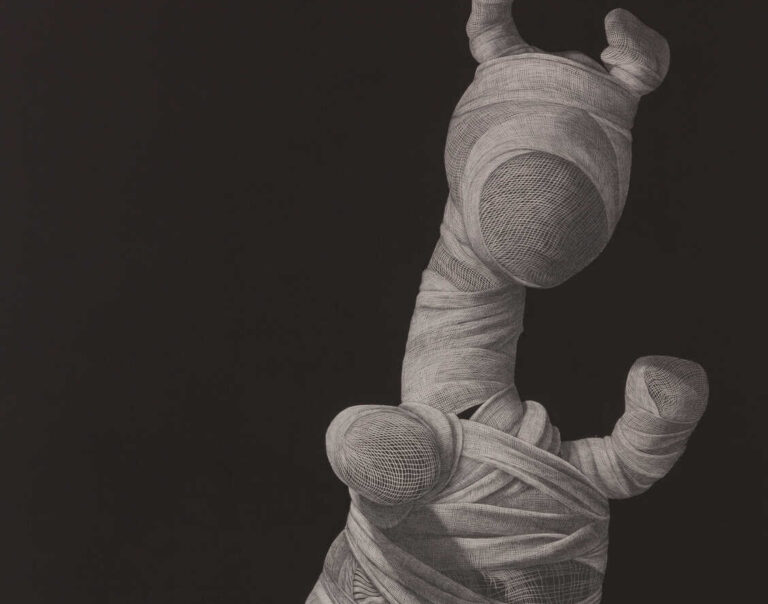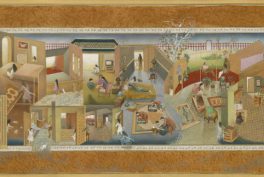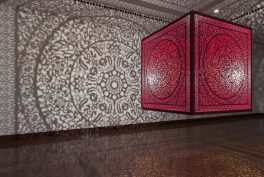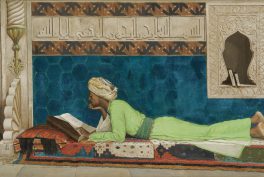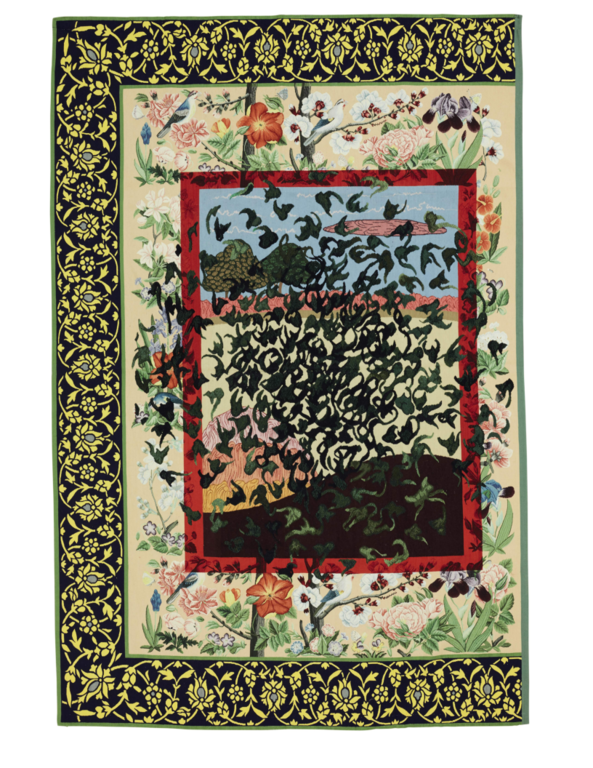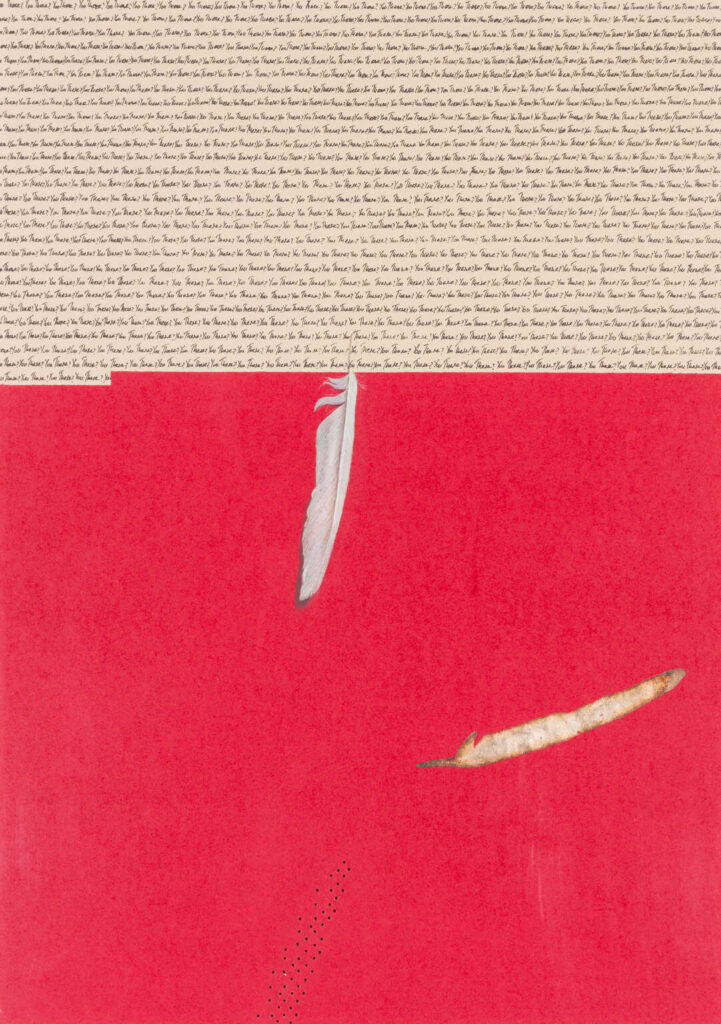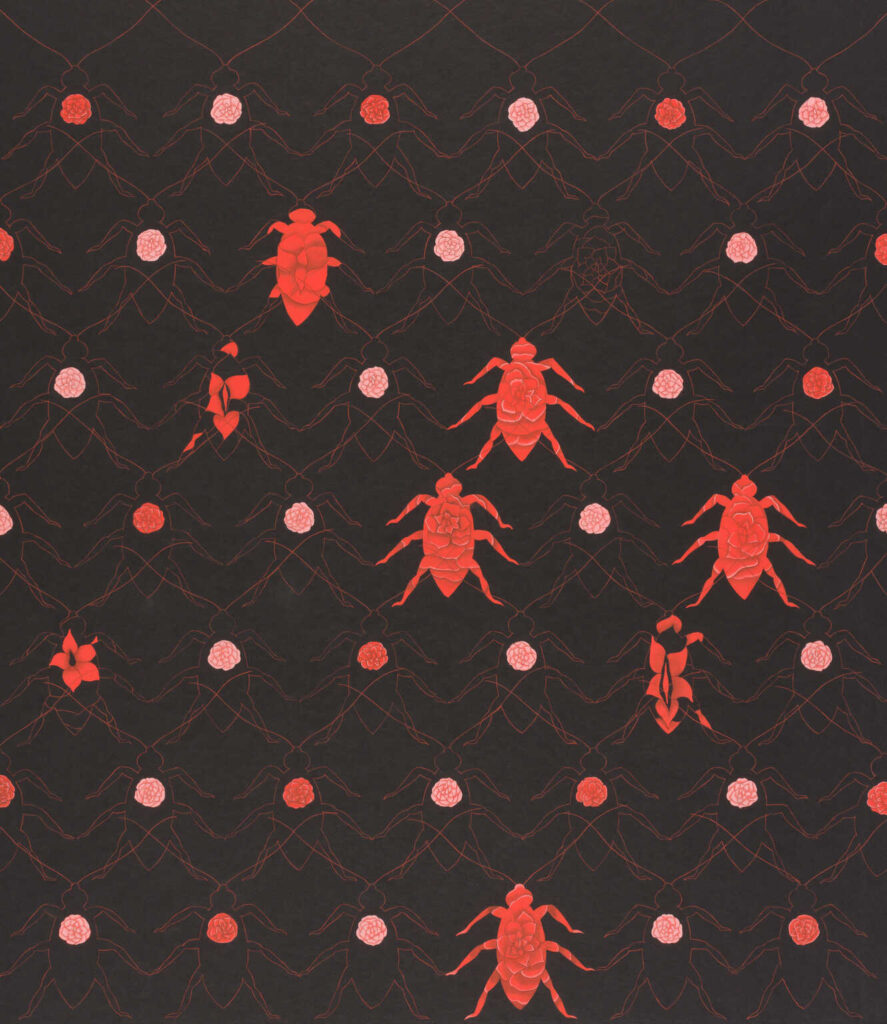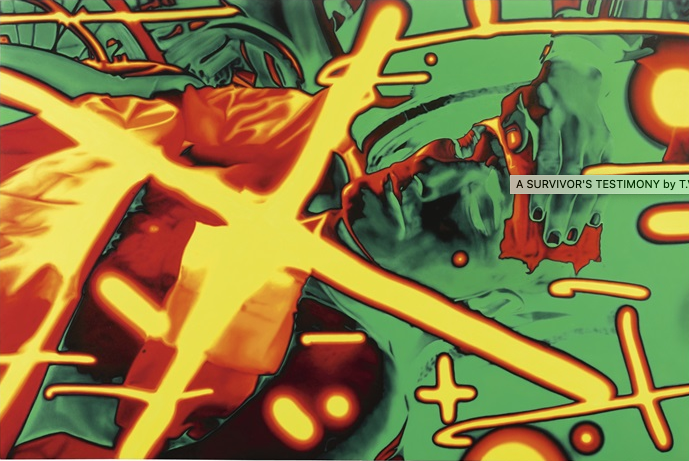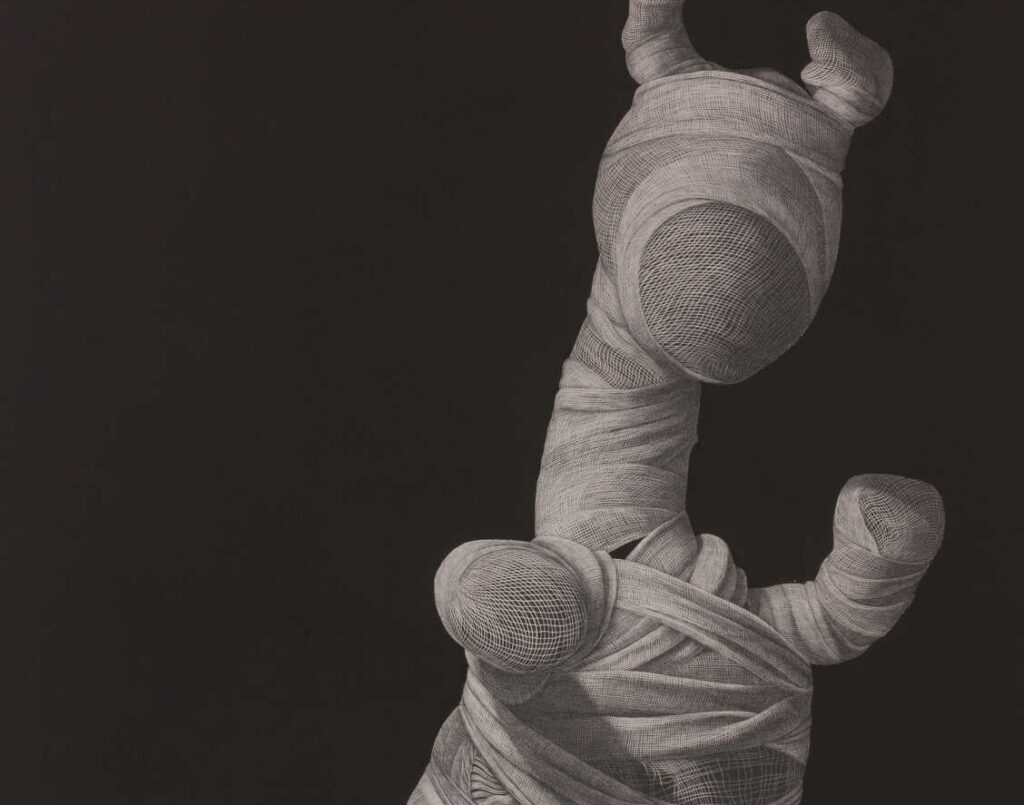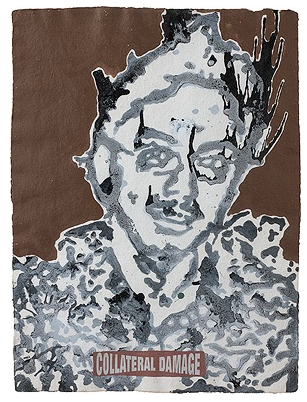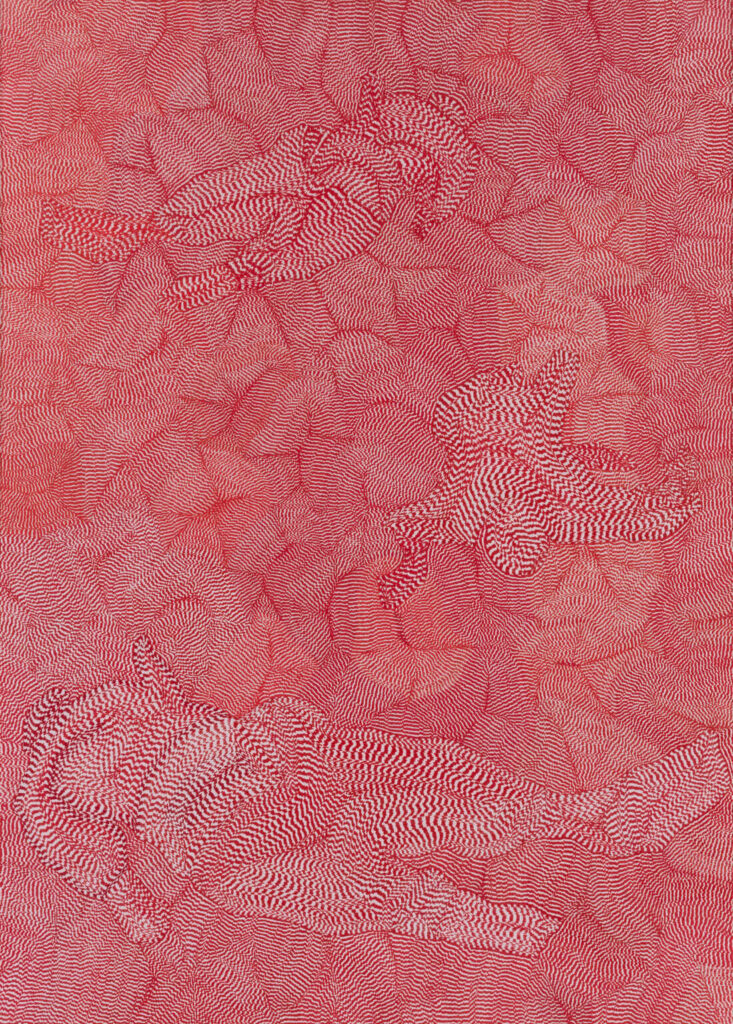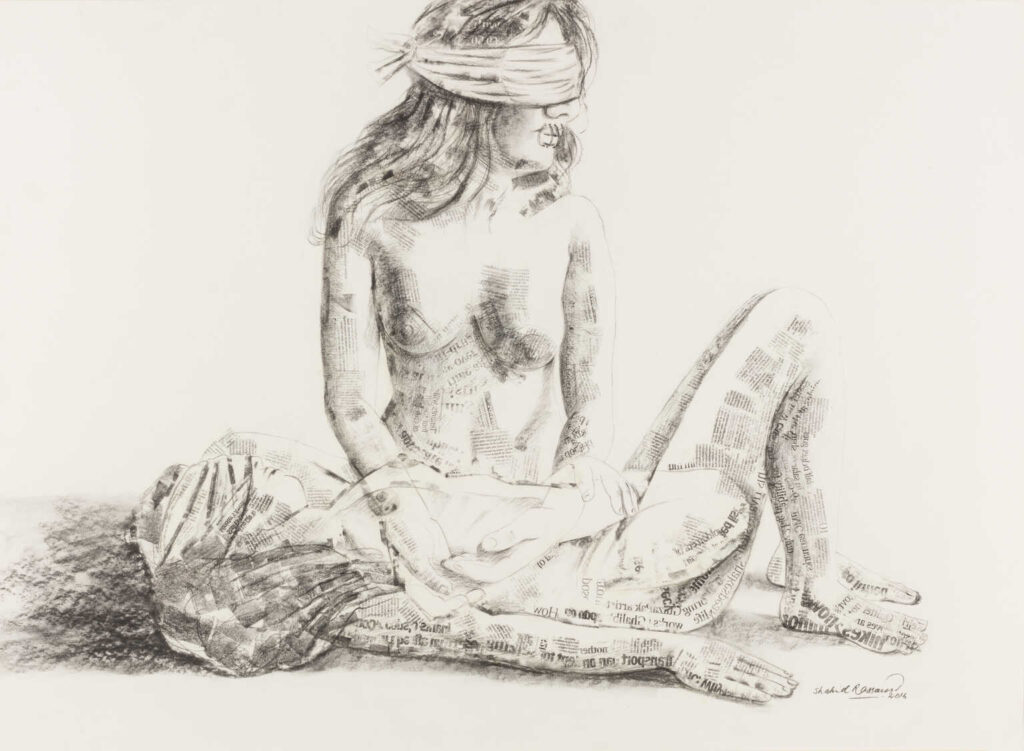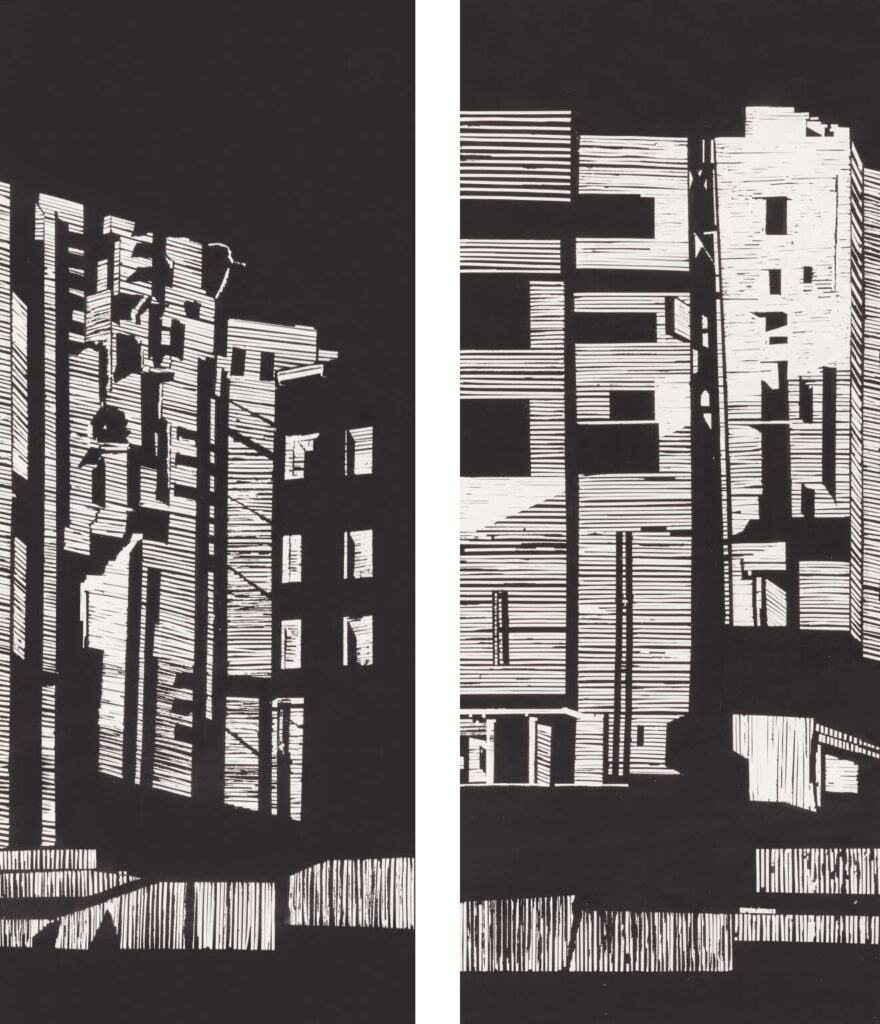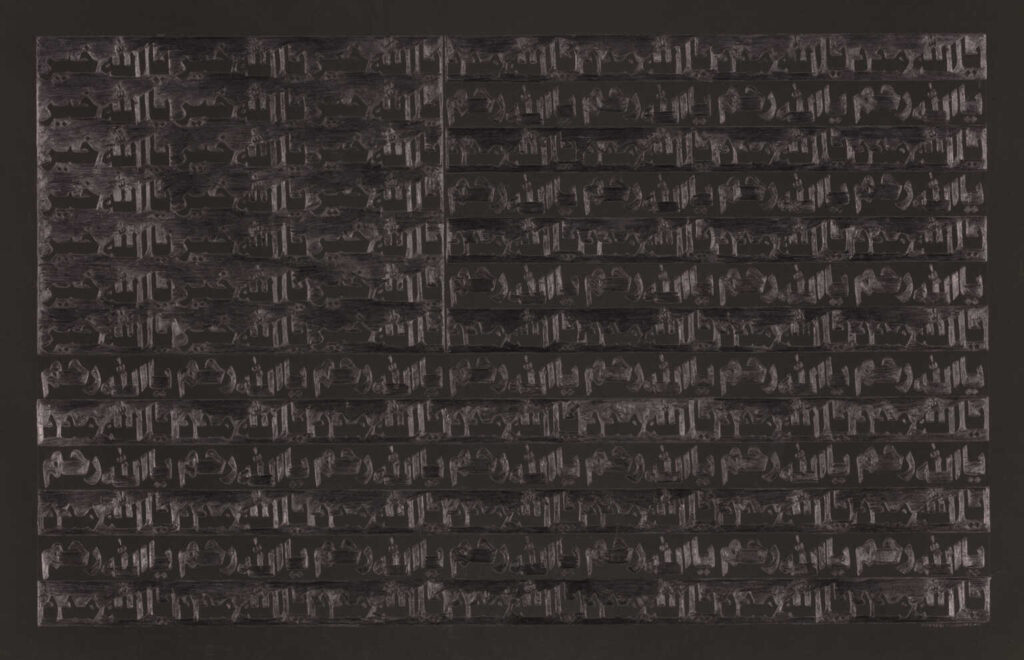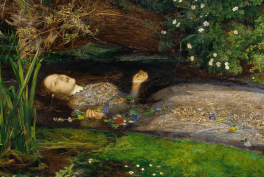After the tour, Qayyum joined us via Zoom from her home studio in Canada. And she spoke at some length about how she came to use the humble cockroach in her work.
When I started using this motif, it was to depict the countless deaths and destruction caused by war and terror attacks. […] the value of human life is reduced to that of a pest insect, yet it also narrates the everyday human stories of resilience and triumphs over adversities.
She spoke about how the cockroach metaphorically stands in for immigrants in the post-9/11 environment of growing xenophobia, particularly Islamophobia in the West. Cockroaches as immigrants is a loaded metaphor.
In April 2015, Katie Hopkins, a columnist for The Sun newspaper, wrote:
Make no mistake, these migrants are like cockroaches.
The UN high commissioner for human rights, Zeid Ra’ad Al Hussein, denounced her column, saying “cockroaches” was used by both the Nazis and those behind the genocide in Rwanda to describe the people they wanted to eliminate.
Qayyum has assembled a beautiful body of work using the cockroach motif. Visually stunning, it is a powerful commentary on xenophobia.
TV Santosh’s Negative Paintings of Survivors of Terrorism and Wars
As we turned the corner into the next section of the museum, we were confronted with TV Santosh’s large oil painting on canvas titled A Survivor’s Testimony, created in 2009. Santosh works on the themes of war and global terrorism and paints in lurid greens and shocking orange, recreating the effect of a color photographic negative.
The artist fills his large canvases with figures contorted in pain. Santosh says in his artist statement that he lifts:
Pivotal episodes from recent history and renegotiates their appearance with a shock-bulb of violent energy that eclipses the work.
Adeel-uz-Zafar’s Drawings of Children’s Toys Wrapped in Gauze
Shireen half-jokingly warns us that this next section of the exhibit has some challenging work. The Ahmads’ curatorial vision is admirable. They are not ones to shy away from complex, political artworks.
